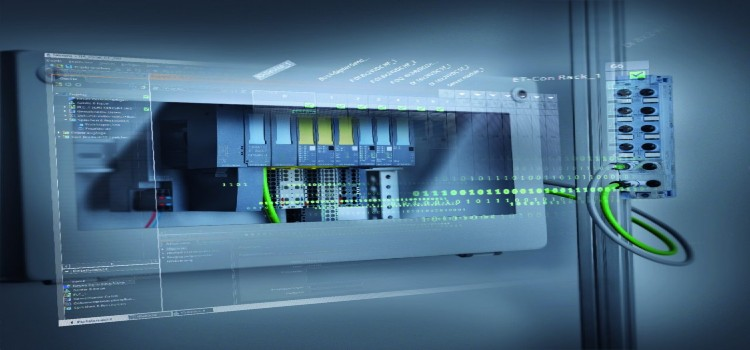Navigating the Evolution of Distributed I/O Systems: Trends and Innovations
Introduction
In today's rapidly evolving technological landscape, distributed input/output (I/O) systems have emerged as a crucial component in various industries. These systems play a pivotal role in enabling efficient data acquisition, processing, and control in distributed environments. As businesses continue to harness the power of automation, real-time data analysis, and the Industry 4.0, the distributed I/O market is experiencing significant growth. In this blog, we will delve into the distributed I/O market, exploring the key market trends and future innovations in distributed I/O.
Key Trends in the Distributed I/O Market
Industrial Internet of Things (IIoT) Integration: The integration of the Industrial Internet of Things (IIoT) into industries is driving the exponential growth of the distributed I/O market. IIoT adoption is primarily aimed at boosting operational efficiency and minimizing downtime. In this synergy, distributed I/O systems assume a pivotal role by seamlessly collecting real-time data from myriad sensors and devices, facilitating predictive maintenance, and empowering data-driven decision-making.
By acting as the conduit for this data flow, distributed I/O systems provide industries with the agility to optimize processes, pre-empt equipment failures, and harness data insights for strategic decision-making. This dynamic collaboration between IIoT and distributed I/O promises a future in which industries operate more efficiently and adapt proactively to changing demands, reshaping the industrial landscape.
For instance, in January 2023, Rockwell Automation introduced the ThingWorx IIoT platform, aimed at utilizing machines to enhance efficiency and productivity within the industrial sector. Through its real-time data monitoring, predictive maintenance, and analytics capabilities, ThingWorx enables industries to harness the power of distributed I/O systems and make data-driven decisions that enhance operational efficiency and boost overall equipment effectiveness.
Edge Computing: The emergence of edge computing signifies a significant shift in data processing as distributed I/O systems migrate closer to data sources. This transition offers accelerated data processing, reduced latency, and enhanced overall system performance as its primary advantages. It is worth noting that this trend is not confined to speed improvements but represents a fundamental change in data utilization. In critical sectors such as finance and autonomous vehicles, the ability of edge devices to enable real-time decision-making is particularly valuable.
For instance, in May 2023, Dell launched its latest edge computing platform, harnessing the potential of edge computing. It involves processing data closer to its source to enhance efficiency in various industries. Distributed I/O plays a crucial role in this strategy, ensuring that data can be processed and acted upon swiftly. It leverages edge computing to optimize data processing and decision-making in real-time, particularly in sectors in which immediate data analysis is essential.
Additionally, this move relieves networks of processing bottlenecks, ensuring robustness and adaptability. In manufacturing, it plays a pivotal role in achieving real-time control, ultimately boosting productivity and adaptability. Furthermore, edge computing serves as a linchpin in the journey toward the Industry 4.0, enabling seamless data integration, predictive maintenance, and data-driven innovation. This transformation blurs the boundaries between the physical and digital realms, ushering in an era brimming with transformative possibilities.
Wireless Connectivity: The incorporation of wireless communication protocols, such as Wi-Fi, Bluetooth, and LoRaWAN, is significantly simplifying the deployment of distributed I/O systems. Wireless connectivity eliminates the need for intricate wiring and enables flexible and cost-effective installations, presenting an attractive option across various industries.
This shift also presents a reduction in physical clutter and greater adaptability, as wireless I/O systems can be easily reconfigured without the constraints of fixed connections. In an era of digital transformation, this transition aligns seamlessly with the broader integration of IoT devices, promising enhanced operational efficiency and data-driven decision-making.
In July 2021, Advantech launched a dual-band industrial Wi-Fi I/O module, developed in collaboration with Microsoft Azure Sphere. The objective is to simplify the deployment of wireless distributed I/O systems. This module combines the benefits of wireless connectivity with robustness, making it suitable for challenging industrial settings.
Moreover, its integration with Microsoft Azure Sphere emphasizes the importance of secure and scalable solutions in IoT and the Industry 4.0. This innovation promises streamlined operations, cost-efficiency, and data-driven insights, enhancing connectivity options for businesses in the digital era.
Future Innovations in Distributed I/O market
Artificial Intelligence (AI) and Machine Learning (ML) Integration: The integration of AI and ML into distributed I/O systems is set to bring about a significant transformation, characterized by improved efficiency and predictive maintenance. This strategic fusion empowers these systems to make well-informed and real-time decisions, allowing for precise optimization of operations.
A key point to highlight is the potential for increased efficiency in manufacturing. For instance, these systems can adapt production settings on the fly to enhance product quality, reduce waste, and save energy. Moreover, the ability to predict maintenance needs by analyzing sensor data leads to cost reductions and extends the life of equipment.
The alignment of distributed I/O systems with AI and ML leads to on-the-spot data analysis. It reduces delays and harmonizes seamlessly with applications requiring quick decision-making, such as autonomous vehicles. In essence, this integration signifies more than just automation; it signifies a shift towards intelligent and self-improving systems, providing organizations with a path to heightened efficiency and innovation in an increasingly data-driven environment.
5G Connectivity: The introduction of 5G networks is set to bring about a significant transformation in the capabilities of distributed I/O systems. Beyond just speed and reliability, the deployment of 5G creates a new realm of possibilities. For instance, it allows distributed I/O systems to make nearly instantaneous decisions, which is particularly crucial in sectors such as autonomous vehicles.
Furthermore, the low-latency and high-bandwidth features of 5G align perfectly with the integration of AI and ML into distributed I/O systems. The rapid data exchange enabled by 5G allows AI algorithms to process information in real time, improving decision-making across industries. This synergy has the potential to unlock novel applications, from predictive maintenance in manufacturing to precision agriculture in farming.
Conclusion
In conclusion, the distributed I/O systems landscape is undergoing a profound transformation, driven by key trends and future innovations. The integration of the Industrial Internet of Things (IIoT) promises heightened operational efficiency and data-driven decision-making, reshaping industries for the better. Edge computing offers accelerated data processing and real-time control, while wireless connectivity simplifies deployment. Looking forward, the integration of artificial intelligence (AI) and machine learning (ML) is set to revolutionize efficiency and predictive maintenance.
At the same time, the advent of 5G networks promises ultra-low latency applications, creating new possibilities in sectors like autonomous vehicles. The distributed I/O systems landscape is evolving rapidly, presenting exciting opportunities to improve efficiency, reduce costs, and drive innovation in an increasingly data-driven world.
About the Author
 Arjun Chetry is an accomplished researcher and writer with a rich history of more than three years in conducting thorough research. With a professional background as a market researcher, he has a keen eye for analyzing industry trends and understanding consumer behavior. His dedication to exploring diverse subjects and conducting in-depth analyses has equipped him with a deep understanding of research intricacies. He remains committed to staying up-to-date with the latest market trends and recognizing their impact on both business and society. His well-rounded interests and experiences contribute to his ability to offer insights and perspectives on a wide range of topics. The author can be reached at arjun.chetry@nextmsc.com
Arjun Chetry is an accomplished researcher and writer with a rich history of more than three years in conducting thorough research. With a professional background as a market researcher, he has a keen eye for analyzing industry trends and understanding consumer behavior. His dedication to exploring diverse subjects and conducting in-depth analyses has equipped him with a deep understanding of research intricacies. He remains committed to staying up-to-date with the latest market trends and recognizing their impact on both business and society. His well-rounded interests and experiences contribute to his ability to offer insights and perspectives on a wide range of topics. The author can be reached at arjun.chetry@nextmsc.com


Leave a Reply